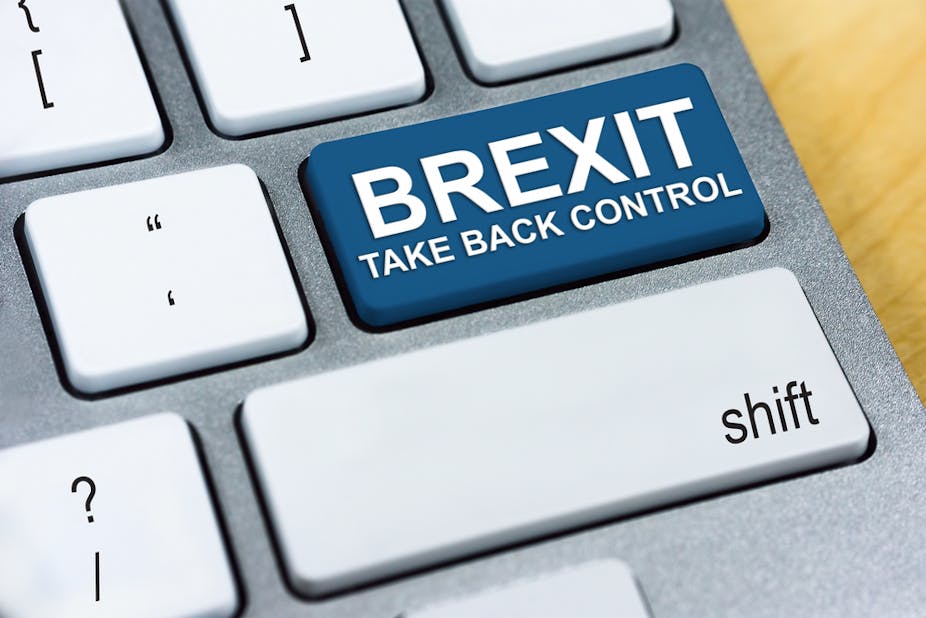Why on earth would business turn to politics and politicians for marketing advice? Or potentially base their strategies for market disruption on the actions of political leaders and their campaigns? Even stop for a moment to think about this: “Aha, if I copied the politicians just think of the benefits for my brand!”
Business always has an interest in the regulation of industries by governments. Firms keep a shrewd eye on trends in interest rates, economic growth projections and each of the main party’s economic policies. Some even make sure they’re on top of foreign policy and its potential influence on key overseas markets. But isn’t looking in the direction of politics for examples of commercial “best practice” unheard of? If so, it’s clearly time for a change.
I wonder if you recognise the phrases “take back control” and “make America great again”? Chances are they won’t fail to summon up a reaction. Not just for you, but many other people. People of diverse political persuasion, age and cultural background. Two phrases that cross traditional boundaries, that are sure to trigger a response, maybe stimulate a conversation or even automatically place an individual into a particular social group: as a “Leaver” or a “Remainer”; “for Trump” or “against Trump”. Groups with labels that, for some, in a few words, sum up their world view. And all of this as a result of a three or four word phrase, from a political campaign.

So what does this all mean for the commercial world? Well, firms want their brand to sum them up in a few words. They want a brand with wide appeal that can cross traditional boundaries in society and which appeals to many different audiences. A brand can be used to bring together diverse groups, including customers, employees and suppliers, to generate a strong bond and sense of affiliation with the firm. An individual’s sense of membership can be so strong they use the brand to demonstrate to others who they are, what they stand for and what makes them distinctive. How do we know this? Not through hearsay, myth or superstition – but from research.
Some firms have achieved this high level of brand performance. This includes the John Lewis Partnership, which includes Waitrose supermarkets. The organisation, through its partnership philosophy, considers itself part of a wider community with customers and suppliers. Not only are employees owners of the business, customers and suppliers are considered as partners in the business’s success. To the Nationwide, a building society, their customers are not just customers, they are members. Who are, on the one hand, recognised as individually authentic and different, while on the other considered as collectively important and influential.
There are many other firms, Apple included, whose brands confer to individuals a sense of belonging and collective identity. Having an iPhone, iPad, MacBook all signal that you’re an Apple person and make a statement about who you are and what you stand for.
But many firms aren’t very good at this. Recent research jointly conducted by Aston Business School and Harris Interactive shows that brands with a poor sense of collective identity and poor co-creation with their customers lack vitality. This results in consumers rating them relatively poorly against direct competitors and less relevant for the future.
Some tips for business
So what useful insight about branding can businesses get from political campaigners?
Focus on collective identity, not just individualism. Recent successful political campaigns do not just follow the traditional line of focusing on the needs of many different individuals. They raise issues and speak to individuals as members of a particular group to which a very substantial number hold a strong sense of membership and affinity. A potential new community.
Concentrate on a few simple core issues. Rather than focus on an array of different issues, campaigns that concentrate on a few strong core ones will better bring the community together. Concentrate on making individuals feel part of a wider movement and, in doing so, bind them to a collective identity, connecting them to a common cause. In the US, the Trump campaign framed issues around putting people first in politics and the US first in trade. In the UK, Vote Leave primarily focused on immigration and the UK making its own decisions in its own interests. For both campaigns, all other issues were interpreted and channelled through these two different and distinct lenses.
Have one simple message around a single purpose. Focusing on collective identity makes the campaign messaging simple. A few chosen words bring the core issues to life and reinforce individual membership of a wide movement – back to those “make America great again” and “take back control” slogans. Both are not passive statements, based on the past, but are purposeful with an end goal in mind. They communicate the purpose and goal of the community.
Show future relevance. Historically some campaigns by political parties have successfully aimed to revive a collective idea of the past based on party history, focusing in on their underlying ideology and founding principals. The winning campaigns in the US presidential election and the European referendum question the modern relevance of this approach. Instead, raising and positioning what the campaign and its supporters see as a positive, alternative and compelling picture of the future can galvanise a community to see itself as an active and vocal part of the future, not just a group of passive and inactive spectators.
Of course, these observations neither show support for or against either of the campaigns. Nor is it the purpose of this piece to reinforce the politics or aspirations behind them. Only time will tell if the political application of these principals not only wins elections but translates into long-term political success. For business, however, it gives pause for thought. If used in a positive and constructive manner, these simple four principals could be used to transform a brand’s success.

